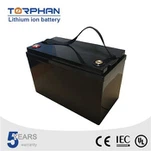Detailed process flow of lithium iron phosphate production
Process flow of lithium iron phosphate production
1. Drying and dehydration of iron phosphate
(1) Drying process in drying room: stainless steel sagger filled with raw material iron phosphate is placed in the drying room, and the drying room temperature is adjusted to 220
20℃, and dried for 6-10 hours. The material is transferred to the next process to the rotary kiln for sintering.
(2) Sintering process in rotary kiln: after the rotary kiln is heated and nitrogen is passed to meet the requirements, feed (material from the drying room of the previous process), adjust the temperature to 54020℃, and sinter for 8-12 hours.
2. Grinding machine mixing process
During normal production, two grinders are put into operation at the same time. The specific feeding and operation of the two equipments are the same (one can also be operated alone during debugging). The procedure is as follows:
(1) Lithium carbonate grinding: weigh 13Kg of lithium carbonate, 12Kg of sucrose, and 50Kg of pure water, and mix and grind for 1-2 hours. Pause.
(2) Mixed grinding: Add 50 kg of iron phosphate and 25 kg of pure water to the above mixed solution, mix and grind for 1-3 hours. Stop the machine and transfer the discharged material to the disperser. Take samples to measure the particle size.
(3) Cleaning: Weigh 100 kg of pure water, clean the grinder 3-5 times, and transfer all the washing liquid to the disperser.
3. Dispersing process of materials in the disperser
(1) Transfer about 500 kg of materials (including the materials for cleaning the grinder) mixed by the two grinders in 2.2 (or mixed twice by one grinder) into the disperser, add 100 kg of pure water, adjust the stirring speed, stir and disperse thoroughly for 1-2 hours, and wait to be pumped into the spray drying equipment.
4. Spray drying process
(1) Adjust the inlet temperature of the spray drying equipment to 22020℃, the outlet temperature to 11010℃, and the feed rate to 80 kg/hr, then start feeding spray drying to obtain dry materials.
(2) The solid content can be adjusted to 15%~30% according to the spray particle size.
5. Hydraulic press material briquetting charging Adjust the pressure of the hydraulic press to 150 tons and 175 tons respectively, load the spray-dried material into the mold, maintain the pressure for a period of time, and compact it into a block. Load it into the sagger and transfer it to the push plate furnace. At the same time, put in several groups of bulk samples and compare them with the materials pressed into blocks.
6. Push plate furnace sintering First heat up, pass nitrogen, reach the atmosphere requirement of less than 100ppm, push the sagger into the push plate furnace, and carry out the heating stage at 300-550℃ for 4-6 hours; constant temperature stage at 750℃ for 8-10 hours; cooling stage for 6-8 hours, and discharge the material.
7. Roller superfine grinding
The material fired in the push plate furnace is input into the superfine grinding mill, the speed is adjusted, and the roller grinding is carried out and then sent to the superfine grinding mill for grinding. Sample each batch for particle size testing.
8. Screening and packaging
Screen and package the ground material. Two specifications: 5Kg and 25Kg.
9. Inspection and warehousing
Product inspection, labeling and warehousing. Including: product name, inspector, material batch, date.







